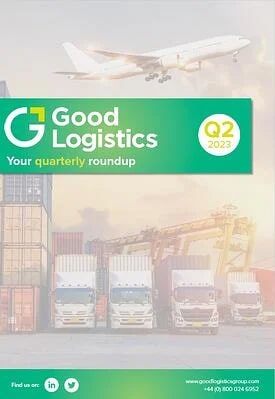As we begin the 2nd half of 2023 the landscape for international trade remains as in most industries one of caution due to global inflationary pressures dampening consumer demand in many parts of the world, as the ripple effects from COVID-19 continue to make their way through economies.
Global inflation peaked in 2022 at just under 9% and is currently sitting at just under 7%. We have all felt the pressures regarding rising costs, which has had a knock-on effect on consumer confidence.
With inflation forecast to drop below 4% in 2024 and in the UK, the Bank of England remains confident of inflation dropping back to 2% by mid to late 2024.
For the UK many had predicted a recession and whilst all households have felt the effects of rising costs through, food, energy, and fuel the economy has so far managed to avoid recession. In fact, the British Chamber of Commerce (BCC) recently upgraded its forecast on UK GDP to reflect a 0.3% rise, so whilst still weak, with energy and commodity prices continuing to fall, there is light at the end of the proverbial tunnel, reflected by this revision.
So, will we see an increase in demand for the shipping and logistics industry in the second half of the year as many had originally predicted? This still remains a little unclear with conflicting opinions, although Hapag Lloyds CEO Rolf Habben, suggested recently, they feel there is a better than 50% chance of a normal peak season.
Rates on the main Asian Westbound trade lane have continued to come under increased pressure and blank sailings and port emissions continue to impact schedule reliability.
Overall year-on-year rates are approximately 40% down. This is now hitting carriers in the pocket with higher operational costs due to increased vessel costs, higher bunker charges, and a jump in equipment and repositioning costs.
The first quarter results of this year reflected this, with Zim back in the red with a loss of $ 58 million while the likes of CMA CGM are showing a +60% drop in pretax profits against 2022.
In fact, many carriers are suggesting Q1 2023 could well be the best quarter of the year, with many longer-term contracts from BCOs finishing in March and renegotiated at much lower levels for Q2 more in line with the current market. Even if there is an increase in demand and volume through the traditional peak any increase in rate level is unlikely to make up the difference.
As a result, carriers continue to review tonnage deployed on trade lanes and look to shift to ensure they maximise the opportunities on the most profitable trade lanes, increasingly they are looking towards Latin America, Africa, and the Middle East.
From a customer’s perspective, as with the stock market, is now the best time to buy the dip?
With carriers already making losses, it is unlikely we are going to see much more of a drop but there are opportunities to look at longer-term deals now with commitment that bring certainty to shipping costs which dependant on business goals could be sensible.
This brings better alignment with carriers and nominated logistics partners and allows more time to focus on process improvement and system alignment to bring greater supply chain security for the long term with increased efficiency of operation.
Our team is ready to discuss options and solutions that can align with your business goals and that can drive value beyond just the cheapest price for a shipment. Please contact us to explore further.
Technology and in particular AI is all over the news at the moment and the shipping and transport industry is continually reviewing and working on new technologies and ways this can be harnessed to increase efficiency and safety.
Container port automation in the UK is one of these growing trends.
As the demand for efficient and cost-effective container handling solutions increases, many ports are turning to automation to streamline their operations and improve productivity. A recent report in the Loadstar https://theloadstar.com/ai-revolution-set-to-drive-into-felixstowe-with-robot-truck-fleet/
One of the most significant advantages of automation is the ability to move containers quickly and efficiently. Automated cranes and handling systems can operate 24/7, with minimal downtime, and are capable of moving containers at faster speeds than traditional manual operations.
Another benefit of automation is the increased safety of operations. Automated systems reduce the number of people working in hazardous areas, reducing the risk of accidents and injuries. Additionally, automation systems are designed to detect potential safety hazards and take corrective action to prevent accidents from occurring.
However, the implementation of container port automation does come with some challenges. The initial investment for automation systems can be significant, and there may be additional costs associated with maintenance and repair. Additionally, there may be resistance from employees who fear job losses because of automation.
Despite these challenges, many ports in the UK have already adopted container port automation, and the trend is expected to continue. As technology continues to advance, the benefits of automation are likely to become even more compelling, and the use of automation systems in container ports may become the norm.
Sustainability and carbon reporting continue to gather pace following the International Sustainability Standards Board statement around scope 3 emission reporting becoming mandatory. The requirement for visibility and offset mechanism solutions within supply chains continues to dominate many discussion points.
We have been working closely with our partner ClimatePartner, to provide a comprehensive carbon emission offsetting service for our customers, to find out more about how we can help you on your carbon-neutral journey, please email me here.
The market is still in a period of change, the focus now is very much on developing robust supply chains, utilising technology to strip out inefficiency, and developing clear goals around sustainability and reporting of CO2 and offset measures so businesses are fully ready for when the market picks up once more.
If you wish to discuss any of the points mentioned above or to talk through your current supply chain management process, please contact me or a member of our team here.

